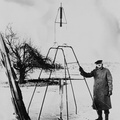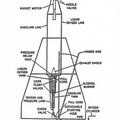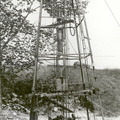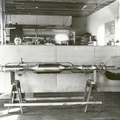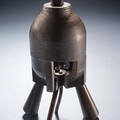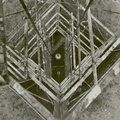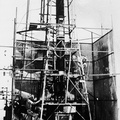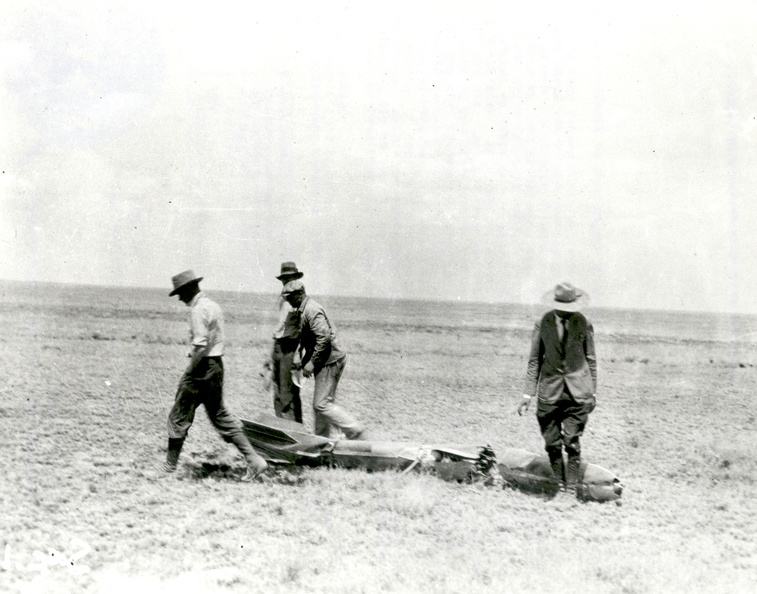
WIKIARCHIVES.SPACE
The Human Spaceflight Archive

Information
- Taken in
- Other
- Author
- NASA
- Description
- Dr. Robert H. Goddard's rocket after flight in New Mexico on April 19, 1932. Those carrying the rocket are (left to right): Nils Ljungquist, machinist; most likely Charles Mansur, welder; Goddard's brother-in-law and machinist Albert Kisk; and Goddard. The rocket had new guiding vanes controlled by a gyroscope which helped stabilization. In 1930, with a grant from the Guggenheim Foundation, Goddard and his crew moved from Massachusetts to Roswell, New Mexico, to conduct research and perform test flights away from the public eye. This rocket was one of many that he launched in Roswell from 1930-1932 and from 1934-1941. Dr. Goddard has been recognized as the father of American rocketry and as one of the pioneers in the theoretical exploration of space. His dream was the conquest of the upper atmosphere and ultimately space through the use of rocket propulsion. When the United States began to prepare for the conquest of space in the 1950's, American rocket scientists began to recognize the debt owed to the New England professor. They discovered that it was virtually impossible to construct a rocket or launch a satellite without acknowledging the work of Dr. Goddard.
- Created on
- Tuesday 19 April 1932
- Albums
- US SPACE PROGRAM / SATELLITES / EARLY ROCKETS
- Source link
- https://www.flickr.com/photos/nasacommons/albums/72157650354621478/
- Visits
- 145
- Rating score
- no rate
- Rate this photo
- License
- Public Domain
- Modified by WikiArchives
- No (original)
- Downloads
- 0
EXIF Metadata
- DateTimeOriginal
- 1932:04:19 00:00:00
Powered by Piwigo





